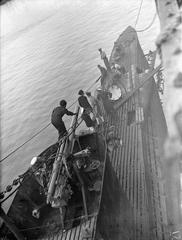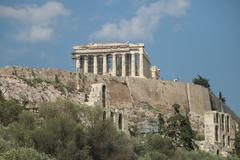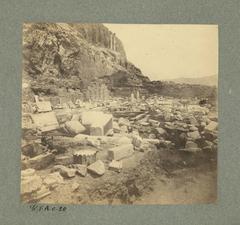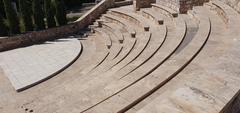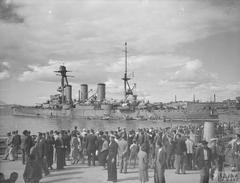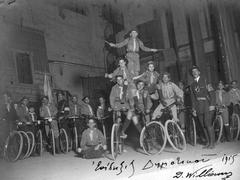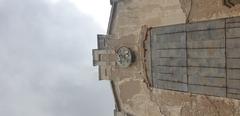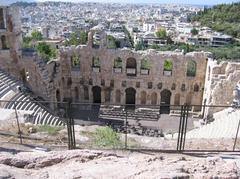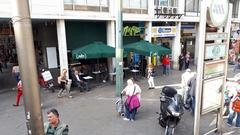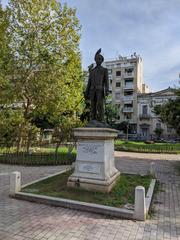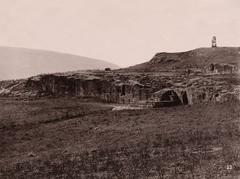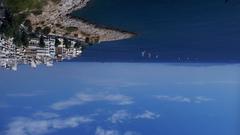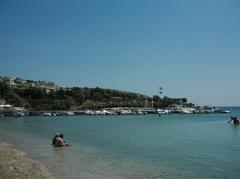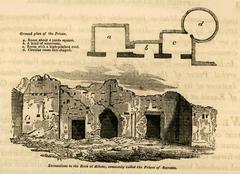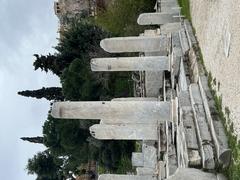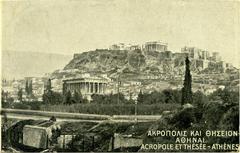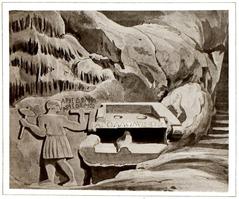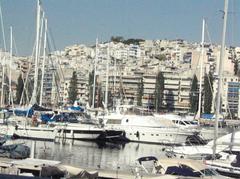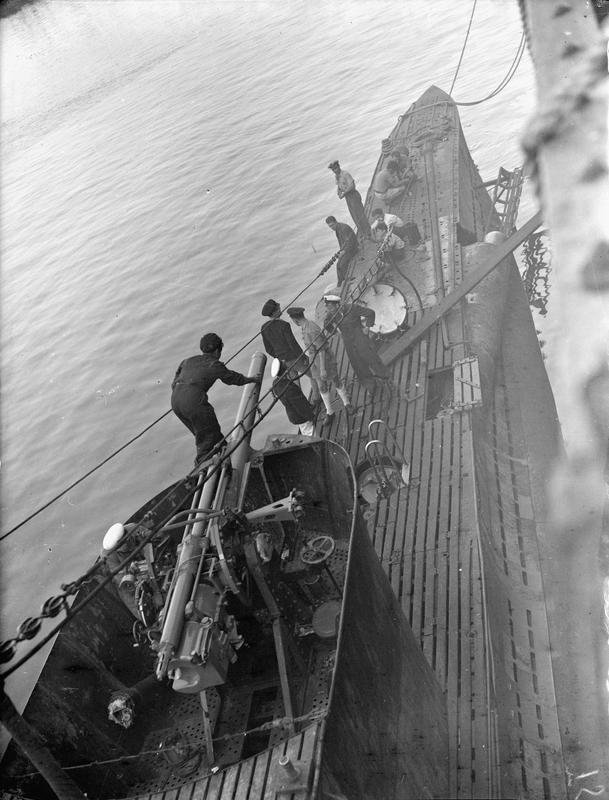
Greek Submarine Papanikolis: Visiting Guide, Tickets, and Piraeus Historical Sites
Date: 15/06/2025
Introduction
The Greek submarine Papanikolis (Y-2) stands as an enduring symbol of national resilience and maritime innovation within the context of Greek naval history. Preserved at the Hellenic Maritime Museum in Piraeus, its storied World War II service and connection to the legendary naval hero Dimitrios Papanikolis make it a must-visit for history enthusiasts, maritime aficionados, and curious travelers. This comprehensive guide provides detailed information on the submarine’s legacy, practical visiting details, and tips for exploring the rich historical tapestry of Piraeus.
For official updates, visit the Hellenic Maritime Museum’s website, and consult additional resources such as Wikipedia and Phileas Guide.
Table of Contents
- About the Submarine Papanikolis
- Historical Legacy and Wartime Service
- Visitor Information
- Exhibit Highlights
- Nearby Attractions
- Cultural and Educational Impact
- Frequently Asked Questions (FAQ)
- Summary and Tips
- References
About the Submarine Papanikolis
Commissioned in 1927 and constructed in France, Papanikolis (Y-2) was named after Dimitrios Papanikolis, a key figure in the Greek War of Independence. The submarine was one of the first modern submarines of the Hellenic Navy, alongside her sister ship, Katsonis (Wikipedia). Despite being technologically outdated by WWII, Papanikolis became a symbol of Greek ingenuity and courage.
Historical Legacy and Wartime Service
Wartime Exploits
During World War II, Papanikolis played a pivotal role in the Greco-Italian War and subsequent Allied operations in the Aegean and Eastern Mediterranean. Under the command of Lieutenant Commander Miltiadis Iatridis and later Lieutenant Nikolaos Roussen, Papanikolis conducted 14 war patrols, sinking at least 14 enemy vessels—including the Italian motor ship Antonietta and the troop carrier Firenze (WW2Wrecks.com). The submarine also participated in covert operations, landing commando teams and supporting resistance movements across occupied Greek islands (Phileas Guide).
Survival and Return
Despite mechanical limitations and intense enemy pursuit, the crew displayed outstanding bravery—surviving depth charge attacks and continuing operations from Allied bases in the Middle East after the German invasion of Greece. Papanikolis returned to Greece after liberation and was decommissioned in 1945 (Greek War Equipment Blog).
Technical Overview
Papanikolis was a Schneider-Laubeuf class submarine, displacing 576 tons surfaced, measuring 62.4 meters in length, and equipped with six 533mm torpedo tubes. It had a crew of about 30 and was powered by Schneider-Carels diesel engines and electric motors (Greek War Equipment Blog).
Visitor Information
Location
- Address: Hellenic Maritime Museum, Marina Zeas, Akti Themistokleous, Piraeus, Greece (Hellenic Maritime Museum)
- Easily accessible from central Athens via Metro Line 1 (Piraeus station) or local buses.
Opening Hours
- Regular Hours: Tuesday to Saturday, 09:00–14:00
- Closed: Sundays, Mondays, and public holidays
- Hours may vary during holidays; check the official website for seasonal updates.
Tickets and Admission
- Adults: €5–6
- Students/Seniors: €2–3
- Children: Free (age limits may vary; check latest info)
- Groups: Discounts available by prior arrangement
- Tickets can be purchased at the entrance; advance booking is recommended during peak seasons.
Accessibility
- The museum and the Papanikolis turret exhibit are wheelchair accessible. Some submarine interior areas may be narrow; contact the museum for specific needs.
- Facilities include ramps, elevators, accessible restrooms, and a café.
Getting There
- Metro: Line 1 (Green Line) to Piraeus station, then a 10–15 minute walk
- Bus: Multiple routes from Athens and around Piraeus
- Car: Limited parking nearby
- Taxi/Ride-Share: Convenient for travelers from the port or city center
Exhibit Highlights
- Conning Tower Display: The preserved turret of Papanikolis offers a direct connection to the submarine’s history.
- Artifacts & Models: Explore authentic navigation instruments, uniforms, logbooks, and personal effects. Detailed scale models and interactive diagrams illustrate submarine operations.
- Multimedia Presentations: Video documentaries and interviews with veterans bring the Papanikolis story to life.
- Memorial Wall: Commemorates the crew and Greek submariners lost in WWII.
Nearby Attractions
- Zea Marina: Lively waterfront with shops and restaurants, ideal for a stroll after your visit.
- Archaeological Museum of Piraeus: Ancient artifacts and exhibitions on local history.
- Municipal Theatre of Piraeus: Notable example of 19th-century architecture.
- Mikrolimano Harbor: Picturesque area for dining and leisure.
Combine your museum experience with other Piraeus historical sites for a full day of exploration (The Crazy Tourist).
Cultural and Educational Impact
The Papanikolis exhibit serves as a platform for education about Greece’s maritime and wartime history. Through interactive workshops, school programs, and commemorative events (such as Ohi Day and Navy Day), the museum fosters appreciation for the values of perseverance, adaptability, and patriotism. The story of Papanikolis is regularly featured in national celebrations and educational materials (Keep Talking Greece; Hellenic Navy Official Site).
Frequently Asked Questions (FAQ)
Q: What are the Papanikolis visiting hours?
A: Tuesday to Saturday, 09:00–14:00. Closed Sundays, Mondays, and public holidays.
Q: How much are tickets?
A: €5–6 for adults, €2–3 for students/seniors, children free. Check official site for current prices.
Q: Is the exhibit wheelchair accessible?
A: Yes, the museum and turret are accessible. Some submarine interiors may be narrow.
Q: Are guided tours available?
A: Yes, guided tours can be arranged in advance. Audio guides and educational materials are available for groups and schools.
Q: Can I take photographs?
A: Photography is generally allowed for personal use; avoid flash and tripods.
Q: How do I get to the museum from Athens?
A: Take Metro Line 1 to Piraeus station, then walk 10–15 minutes or take a local bus/taxi.
Summary and Tips
A visit to the Papanikolis submarine at the Hellenic Maritime Museum offers a unique glimpse into Greece’s wartime history and maritime tradition. The immersive exhibits, accessible location, and proximity to other Piraeus attractions make it a highlight for both tourists and locals. For a richer experience, consider joining a guided tour, attending commemorative events, or exploring nearby museums and the vibrant port district.
Tips:
- Visit on weekday mornings for fewer crowds.
- Combine your museum visit with a stroll along Zea Marina or lunch at a local taverna.
- Check the museum’s website or the Audiala app for current events and special exhibitions.
References
- Hellenic Maritime Museum – Official Site
- Papanikolis Submarine Info – Phileas Guide
- Greek submarine Papanikolis (Y-2) – Wikipedia
- Museum Visitor Information – Hellenic Maritime Museum
- Top Things to Do in Piraeus – The Crazy Tourist
- Y-2 Papanikolis – Greek War Equipment Blog
- WW2 Submarine Papanikolis – WW2Wrecks.com
- Nautical Museum of Greece – Greeka.com
- Papanikolis Exhibit – Hellenic Navy
- Naval History Greece
- Keep Talking Greece – Navy Events
Experience Greek naval history firsthand—plan your visit to the Papanikolis submarine and immerse yourself in the maritime legacy of Piraeus!
